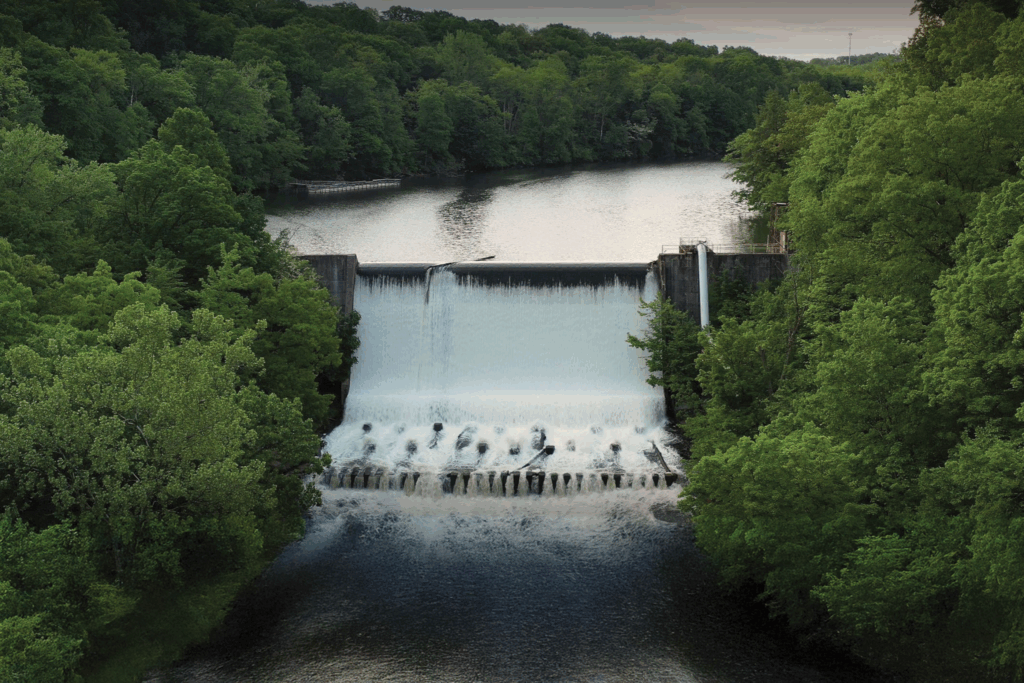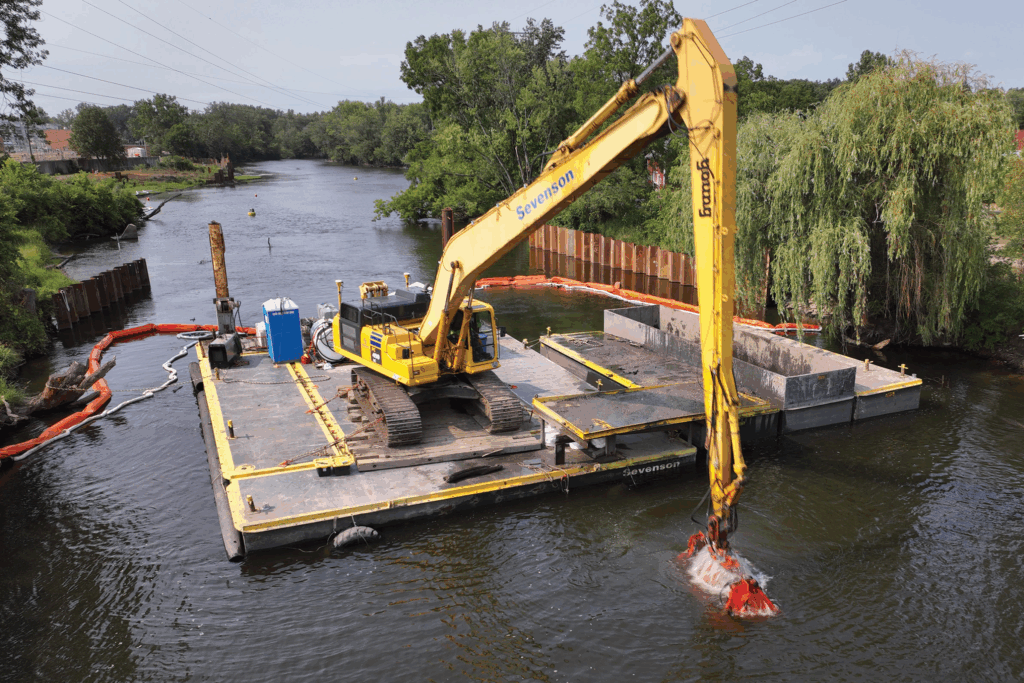
Earlier this year, the U.S. Environmental Protection Agency (U.S. EPA) announced its plans to begin a critical portion of work necessary to eventually remove the Gorge Dam. The effort to “Free the Falls” is broken into four phases. The current work is considered Phase 2, which began in summer 2025, where dredged sediment is transported via temporary pipeline to be safely stored at a sediment placement site that has been prepared at the Chuckery Area of Cascade Valley Metro Park.
Phase 3 will include the careful removal of the concrete dam structure and, as the final step, Phase 4 of the project will be to restore the river channel through Gorge Metro Park to assist the river and surrounding landscape in returning to its natural state. The three final phases are expected to take at least seven years to complete.

A closer look at dredging
This year, Sevenson Environmental Services, Inc., a contractor for U.S. EPA, began the process of dredging and removing contaminated sediment from the bottom of the Cuyahoga River dam pool. First, crews began at the Highbridge Area of Gorge Metro Park, where large temporary pipelines were constructed over several weeks to transport dredged sediment through the duration of the planned work.
Then, specialized equipment went to work on the river itself where a floating scow barge was used as the platform for a machine (similar to an excavator) with a clam shell bucket to scoop sediment out of the dam pool. The dredged sediment is screened for debris and pumped via pipelines to a sediment processing area within Cascade Valley Metro Park.

The dredged sediment is then mixed with Portland cement for stabilization before it is ready to be placed on location. Extensive planning has gone into the sediment placement area’s design to avoid impacts to the area and create a final footprint that will be planted with native vegetation to blend in with the surrounding landscape.
Over the course of the project, approximately 865,000 cubic yards of sediment will be removed from the river, laying the groundwork for safely removing the dam.
Why remove the dam?
Built more than 100 years ago, the Gorge Dam no longer serves any useful purpose and is one of the largest remaining unresolved water quality problems for the Cuyahoga River. In addition to restoring water quality, removing the dam and the sediment behind it will enhance wildlife habitat and improve human health in Northeast Ohio and beyond. It will restore the original grandeur of the Gorge, creating a vibrant future for the river, its watershed and its people.
That future will provide clean water, natural beauty, potential recreational opportunities and economic development for all to enjoy.

What’s next?
While the timeline remains fluid as construction work can be complicated and have unexpected shifts, we are hopeful the dredging process will wrap up by the end of 2027. Next, partners will seek funding for the deconstruction of the dam itself.
For additional project background and the latest updates, visit our project updates page, sign up for Free the Falls e-newsletter and subscribe to the Free the Falls podcast, available on Apple podcasts and Spotify.
For more stories like this, check out Green Islands magazine, a bi-monthly publication from Summit Metro Parks. Summit County residents can sign up to receive the publication at home free of charge.